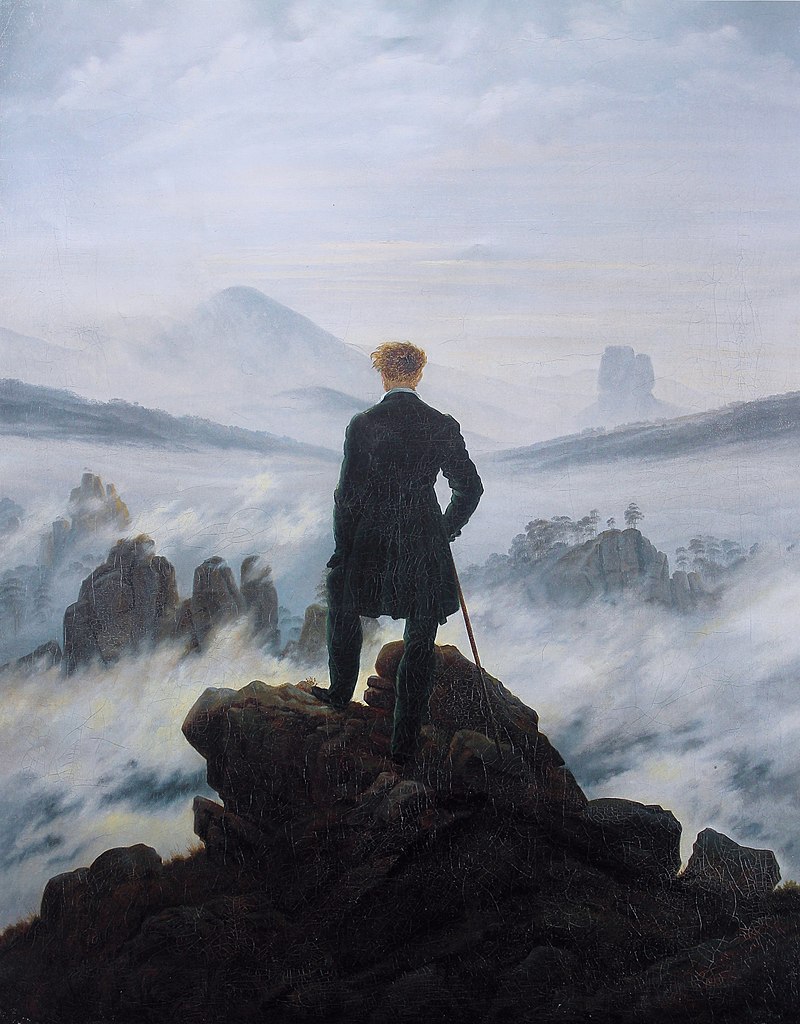
Wanderer above the Sea of Fog
In the foreground, a young man stands upon a rocky precipice with his back to the viewer. He is wrapped in a dark green overcoat, and grips a walking stick in his right hand.
His hair caught in a wind, the wanderer gazes out on a landscape covered in a thick sea of fog. In the middle ground, several other ridges, perhaps not unlike the ones the wanderer himself stands upon, jut out from the mass.
Through the wreaths of fog, forests of trees can be perceived atop these escarpments. In the far distance, faded mountains rise in the left, gently leveling off into lowland plains in the right. Beyond here, the pervading fog stretches out indefinitely, eventually commingling with the horizon and becoming indistinguishable from the cloud-filled sky.
With the composition of the figure's back placed towards the observer otherwise known as Rückenfigur, it allows the observer to gain insight into Friedrich's experience. Friedrich himself states his ideas in regards to this, "The artist should paint not only what he has in front of him but also what he sees inside himself."
Some meaning of this work is lost in the translation of its title. In German, the title is "Wanderer über dem Nebelmeer". Wanderer in German can mean either "wanderer" or "hiker".
Robert Macfarlane discusses the painting in terms of its significant influence on how mountain climbing has been viewed in the Western world since the Romantic era, calling it the "archetypical image of the mountain-climbing visionary", and describing its power in representing the concept that standing on mountain tops is something to be admired, an idea which barely existed in earlier centuries.